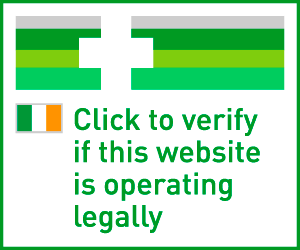What is Eczema?
Eczema is a condition of the skin that causes the skin to become red, inflamed and irritated. Atopic dermatitis is the most common form of eczema. People suffering from atopic eczema will experience red, dry, itchy skin, which can sometimes weep, become blistered, crusted and thickened.
Inflamed skin can become red on lighter skin, and darker brown, purple or grey on darker skin. This can also be more difficult to see on darker skin. It is commonly seen on the creases of the wrists, elbows, behind the knees, on the inner arms, the face and neck but can appear anywhere on the body.
It can present at any age but is very common in childhood. Eczema affects around 1 in 5 children and 1 in 12 adults in Ireland (Irish Skin Foundation)
The Itch Scratch Cycle
If you suffer from eczema you will be all too familiar with the itch/scratch cycle. The intense itch caused by the condition causes great discomfort, the itch leads to scratching and scratching makes the skin itchy and the cycle continues.
Eczema is often referred to as ‘the itch that rashes’ as the itch often will present first and it is from scratching the skin the rash appears. Scratching worsens eczema and makes the skin more vulnerable to infection when you scratch the skin its already delicate surface tends to become damaged and broken causing more problems in soothing and healing the skin. The intensity of the itch can vary at different stages of flare up and can affect overall wellbeing, especially if sleep is affected.
Flare Ups
When symptoms of eczema are triggered, this is known as a flare up, external factors such as detergents, cosmetics, soaps, allergens can all trigger a flare up. A change in temperature and internal factors such as stress can also affect when the condition flares up.
It is not known what causes eczema but it is recognised that it can run in families and very often occurs alongside other conditions such as hay fever and asthma. A weakened skin barrier also is a contributing factor.
When the skins barrier is weakened it is much more prone to invasion of irritants- meaning that the skin gets irritated a lot more than those not suffering from the condition.
It also has fewer moisturising factors- these are fats and oils known as lipids that surround the cells acting like the cement between the bricks of the protective layer. This means moisture can be lost from the skin and allergens can pass through more easily.
The PH of eczema prone skin tends to be elevated, healthy skin has a natural PH level of around 5.0, this means that the acidic skin barrier doesn’t function as it should. Our skin’s acidity levels are also related to a breakdown in the skin’s microbiome which guards us against bad bacteria. This means that people with eczema are more susceptible to bacterial infection on the skin.
In eczema, some common everyday substances e.g. soap increase the ph. of the skin and contribute to the weakening of the skin’s barrier and should be avoided.
My top tips for treating eczema
Aim for a strengthened barrier
A strengthened skin barrier is key for the relief from and prevention of flare ups of eczema. Avoiding any ingredients that will weaken the barrier further is key, so I would avoid exfoliating acids, harsh grainy exfoliators and also tight synthetic materials in clothing. If you are concerned about a build up of dry skin on the surface look for the ingredient Urea that will help hydrate the skin but also remove the build-up
Get to know your triggers and avoid them
If you are not familiar with what triggers your flare ups consider keeping a diary. You may notice that your eczema worsens when the pollen count is high, if so, avoid drying clothing outside and keep the windows closed when you are asleep. Perhaps certain foods can trigger flareups, try cutting them out and remember that stress is a huge trigger for many people.
Reduce the use of soaps and detergents
Remember that soap will heighten the PH of the skin so should be avoided in hand-washing, baths and showers. A shower oil helps deliver essential lipids to the skin and protects against the drying effect of hard water and a cream wash will help restore the skin barrier and rebalance the skin microbiome.
Try a soap substitute and wear gloves when cleaning to protect against chemicals in cleaning products and wash and moisturise the hands when removing gloves.
For a hand cream that will help with the drying effect of hand sanitisers and wearing gloves the Lipikar hand from la roche posay helps to restore the protective hydrolipidic film.
Soothe the skin to bring down the itch and inflammation
Treating the itch on the skin is vital to interrupting the itch and scratch cycle, if you can avoid breaking the skin through scratching then the flare will be reduced. A balm that will soothe the irritation and balance the microbiome on the skin surface will help with protecting the barrier function
Control the itch and soothe irritation with an SOS spray, excellent for severe flareups
Consider an antihistamine to calm the itch and topical corticosteroids – creams and ointments will reduce swelling and redness during flare-ups- speak to one of our pharmacists about including these in your routine.
Establish an emollient routine
A good emollient routine is crucial to manage the flare ups of eczema and prevent water loss by covering your skin with a protective film. They make the skin feel less dry and protect against inflammation reducing the number of flare ups you experience.
The best emollient routine is the one that you will stick to- consistency is key in treating eczema and moisturising the skin daily is vital. Emollients work to repair the barrier of the skin, soothe redness and increase the effectiveness of active ingredients reducing the need for cortosoids long term.
Atoderm Intensive Baume quickly stops itching and reduces the urge to scratch, it is a soothing and dermo-strengthening treatment to restore healthy, comfortable skin.
Please seek advice from one of our pharmacists or from your GP if skin becomes wet or weepy, with yellow/ brownish crusts or very sore, with clusters of painful itchy blisters, particularly if there has been contact with someone who has a cold sore.










